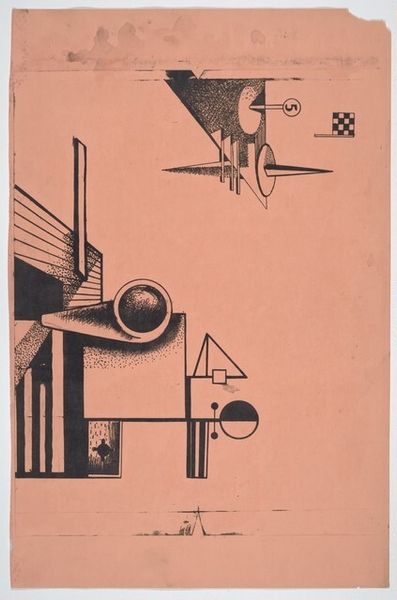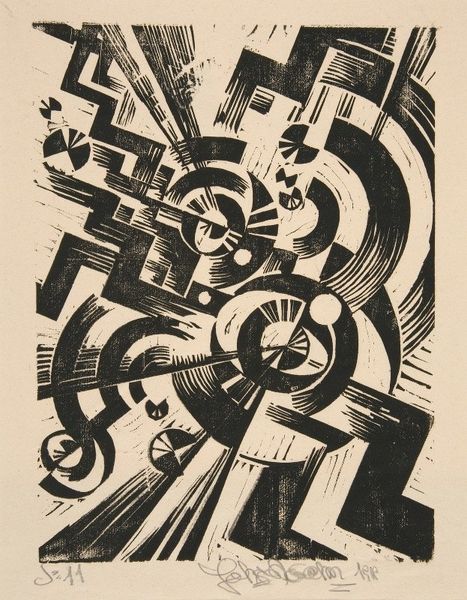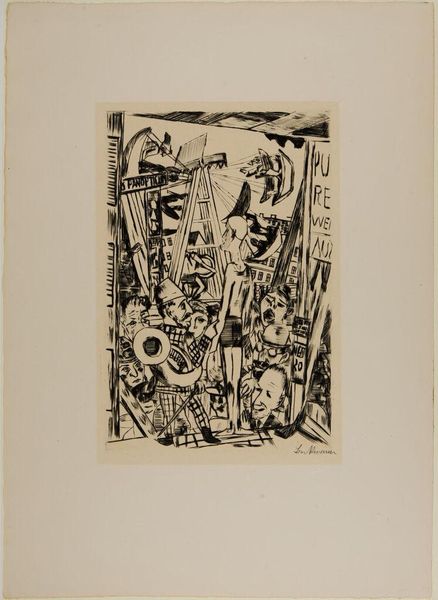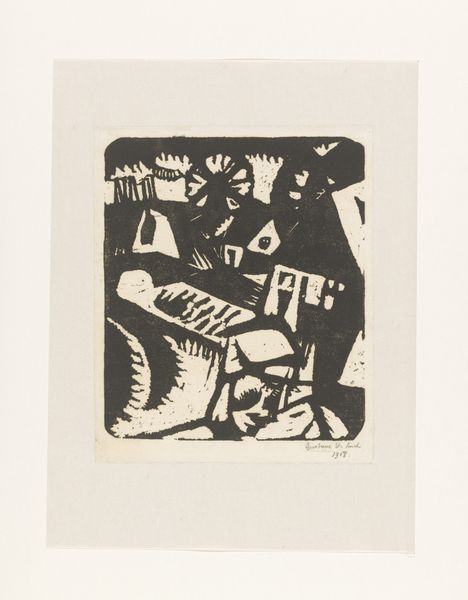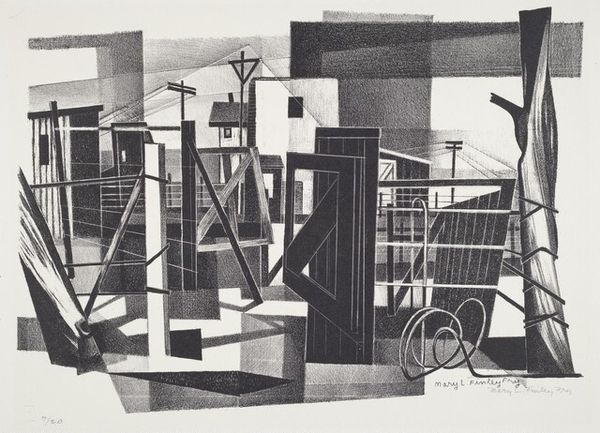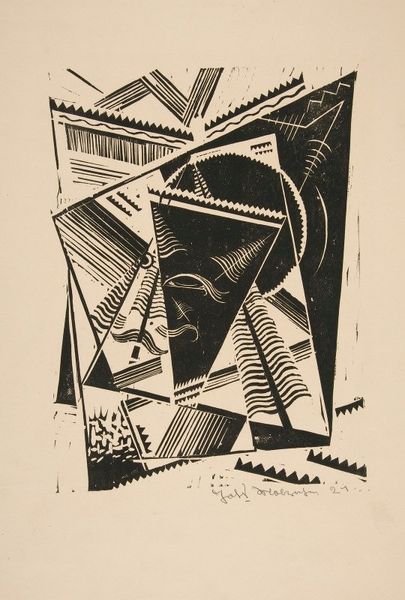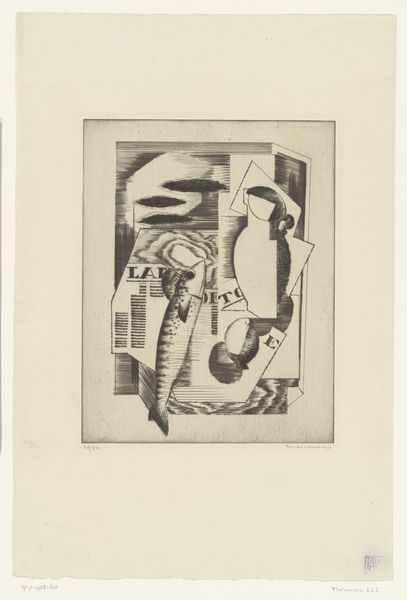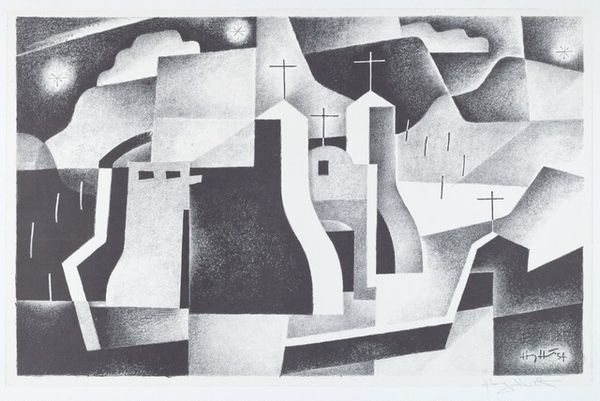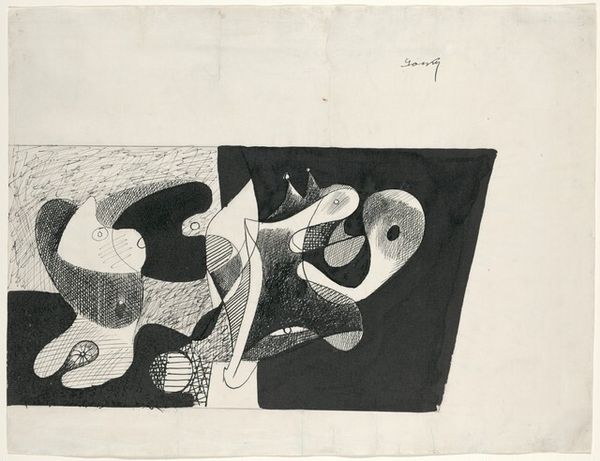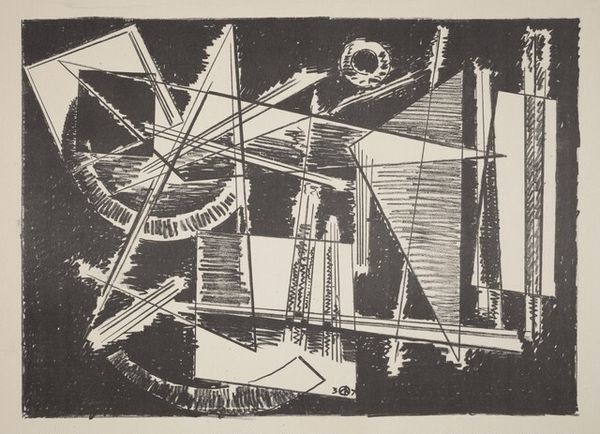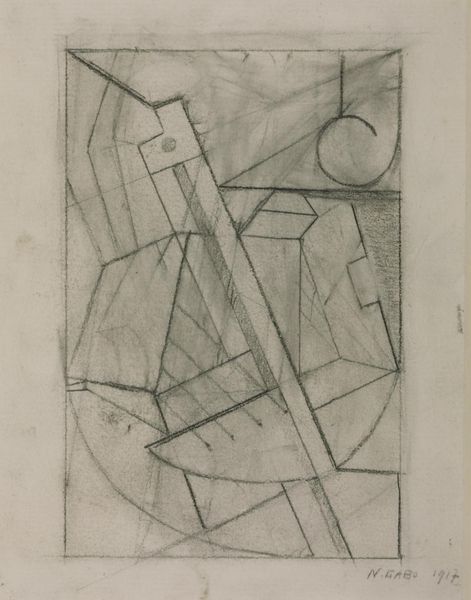
lithograph, print
#
lithograph
# print
#
abstract
#
form
#
pencil drawing
#
geometric
#
expressionism
#
geometric-abstraction
#
line
#
bauhaus
#
modernism
Copyright: Public Domain: Artvee
Curator: Looking at this work, entitled "Lithographie No. III", dating to 1925, we see the hand of Wassily Kandinsky at play. Created as a lithograph, it epitomizes geometric abstraction. What springs to mind for you gazing at this piece? Editor: A jumble. Delightful chaos. It’s like the blueprints for a machine that doesn't yet, and possibly shouldn’t, exist. It evokes a peculiar sense of organized pandemonium. It’s somehow comforting in its confident strangeness. Curator: Confidence is a brilliant descriptor here! There's such bold conviction in the use of these forms – the circles, the triangles, the severe lines – arranged on what is deceptively bare and calming parchment. These forms symbolize a spiritual reality, reflecting Kandinsky's theory that art can communicate on a profound, non-verbal level. Editor: It reminds me of some bizarre, forgotten alphabet. These shapes feel almost like characters or letters, maybe even a hidden message, which gives the work an added depth, like a puzzle waiting to be deciphered. It invites speculation, drawing you in. What is its underlying syntax, what secret is concealed in the geometry? Curator: Precisely. The intent to provoke this kind of thinking and decoding is exactly in keeping with the tenets of the Bauhaus movement with which Kandinsky was affiliated. The composition reflects a synthesis of art, craft, and technology aiming to rebuild society after the First World War. Kandinsky used visual language seeking a shared, universally understandable symbolism. Editor: Despite the rigor, though, I still find a whimsical playfulness in it. Almost like musical notes scattered across the page in some improvisational score. You could almost hear a clanging, experimental tune emerging from the array of black forms dancing around the parchment field. It’s really hard not to respond emotionally. Curator: I concur! The intellectual and the emotional are not mutually exclusive in this work, that is indeed what makes it memorable and profoundly human despite the apparent coldness of abstraction. Editor: Exactly, a kind of magic emerges. Thanks for helping to tune my mind’s ear. Curator: The pleasure was all mine, especially venturing with you into such an extraordinary example of a synthesis that emerged from that era.
Comments
No comments
Be the first to comment and join the conversation on the ultimate creative platform.

